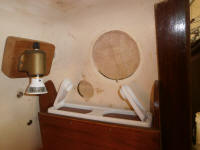
110 Cookson Lane | Whitefield, ME 04353 | 207-232-7600 | tim@lackeysailing.com
Southerly | Tuesday, November 18, 2014
One of the first items to do before I could truly advance the work on the cabin overhead was to complete a partially-finished repair to two old instrument holes in the aft bulkhead. The owner had finished the outsides of these holes, but the insides remained raw.
To begin, I sanded the area around the two holes, creating a small taper in the fiberglass around each opening. This would allow room for new fiberglass. Since this wasn't a structural repair--the liner had no structural value--I didn't extend the taper out very far, just enough to give the new fiberglass somewhere to tie into the existing, and I only planned a single layer of fiberglass.
After cleaning up, I applied some thickened epoxy inside the two openings to smooth out and fill the depressions flush with the edges.
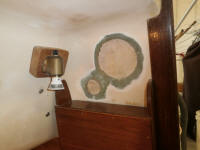

Later, when that had had time to partially cure, I installed a layer of fiberglass over the top of the two holes and left it to cure.

Most of the day was consumed with interior prepwork and masking to get ready for painting the overhead and several of the bulkheads. Before beginning, I removed any extraneous boat gear that was still in the cabin, tucking it all away into closed lockers and out of the way for the duration. I also removed the dining table and any other hardware that I could easily remove, including the VHF radio and wiring for the sailing instruments on the aft bulkhead, though I left other electrical installations strictly alone, not wanting to delve deeper into things than necessary. I tried to remove several eye straps on the overhead (there for holding open the ports), but was unable to move the screws; they were so tight and "welded" in place that they broke my screwdriver blade. So I decided to leave those in place.
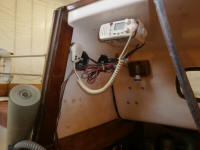
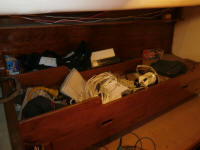
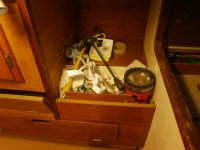

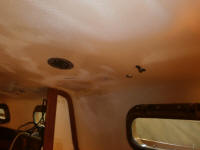
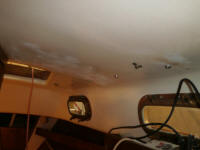

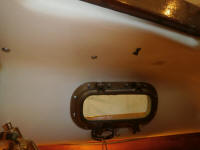
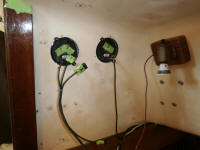

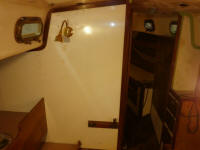
Then, I masked off trim, ports, deadlights, and so forth, taking most of the remainder of the day to complete the initial masking work. Then, with what time remained, I started installing paper to protect the woodwork, flat surfaces, and other areas, as much to prevent sanding dust from going everywhere as for drip control: I'd need to sand the overhead and bulkheads to prepare them for primer, and then sand a couple more times during the painting process, and I didn't want this to infiltrate all the "finished" spaces and storage areas of the boat

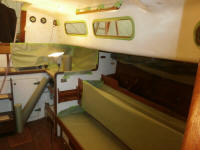
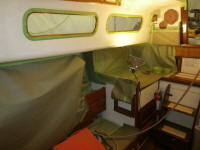
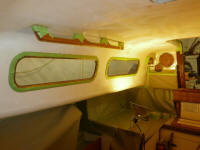
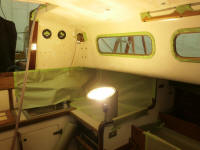
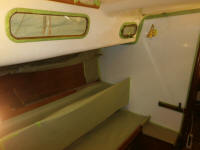
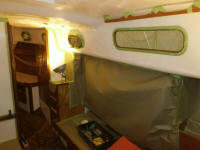
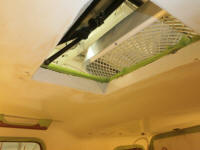
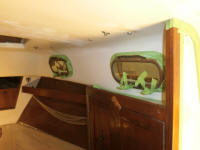
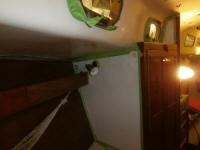
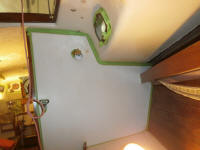
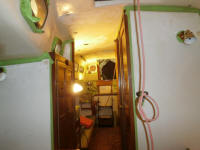
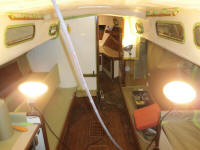
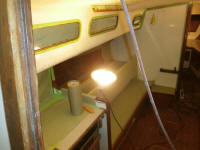
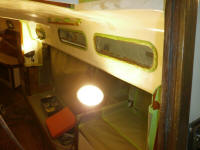
The new hardware I'd ordered for the sink drain turned out to be a bust: incompatible thread type. (Insert groan, eye roll, and general--yet inevitable--disgust at plumbing fittings here. My bane.) So I ordered another fitting that I knew would work, along with what I'd need to adapt the drain hose size accordingly.
Total Time Billed on This Job Today: 7.5
Hours
